Northern Ireland have been unable to qualify for a major tournament since the Euros in 2016.
A major component in their road to qualifying for their first major tournament since 1986 was the goalscoring exploits of Kyle Lafferty.
The journeyman striker scored a remarkable seven goals, taking his country to France for their first-ever appearance in a European Championship.
Over the past eight years, Northern Ireland have been disappointing, suffering setbacks such as losing in the World Cup play-offs in 2017 and facing relegation in the Nations League in 2021.
As Northern Ireland’s heroes of yesterday hang up their boots, a new generation must step forward.
As Northern Ireland have faced significant problems replacing Kyle Lafferty, one hopeful who will try to step up and take that mantle is 16-year-old Braiden Graham.
Graham is a product of Linfield’s academy and has gained a reputation for being potent in front of goal.
His impressive performances led to Linfield manager David Healy, Northern Ireland’s all-time top goalscorer, giving him his first team debut at just 15 years old.
Having gone onto make 14 appearances over the past season for Linfield, the forward has earned a move to Everton.
This Braiden Graham scout report and tactical analysis will provide an analysis of why Graham has been so highly rated and what he must improve on in order to progress all the way to first-team football in England.
Braiden Graham Position
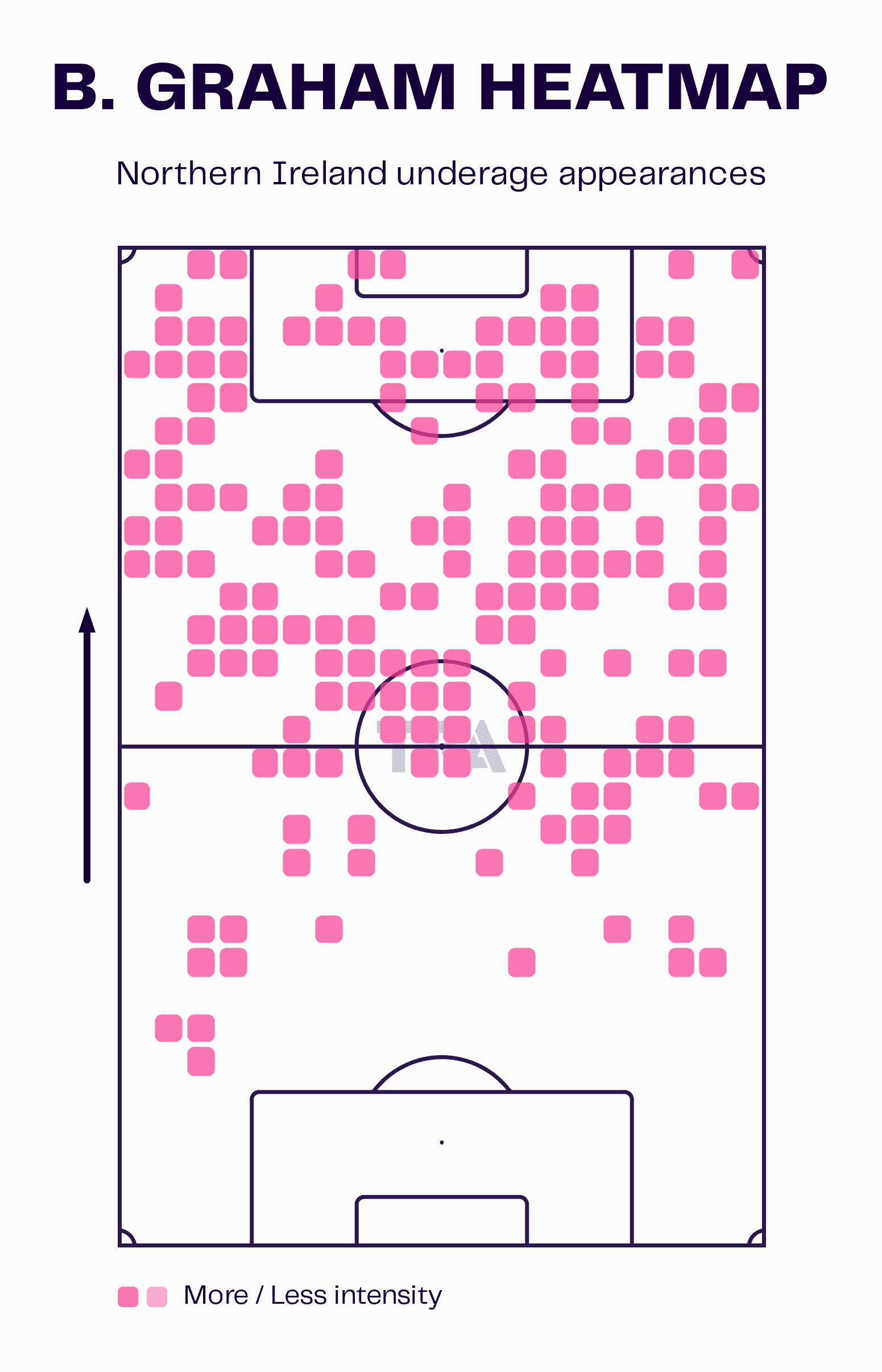
When you look at Graham’s heat map for the games he has played in the Northern Ireland underage teams, his position and role within the team’s tactics is evident.
Graham likes to operate in the width of the penalty area, playing as a classic poacher.
Graham uses his speed and positioning to stretch the opposition’s defences, remaining on the shoulder of the last defender.
He does have the ability to pull out wide when needed, yet Graham aims to occupy the opposition’s centre forwards and be in positions where he can score goals.
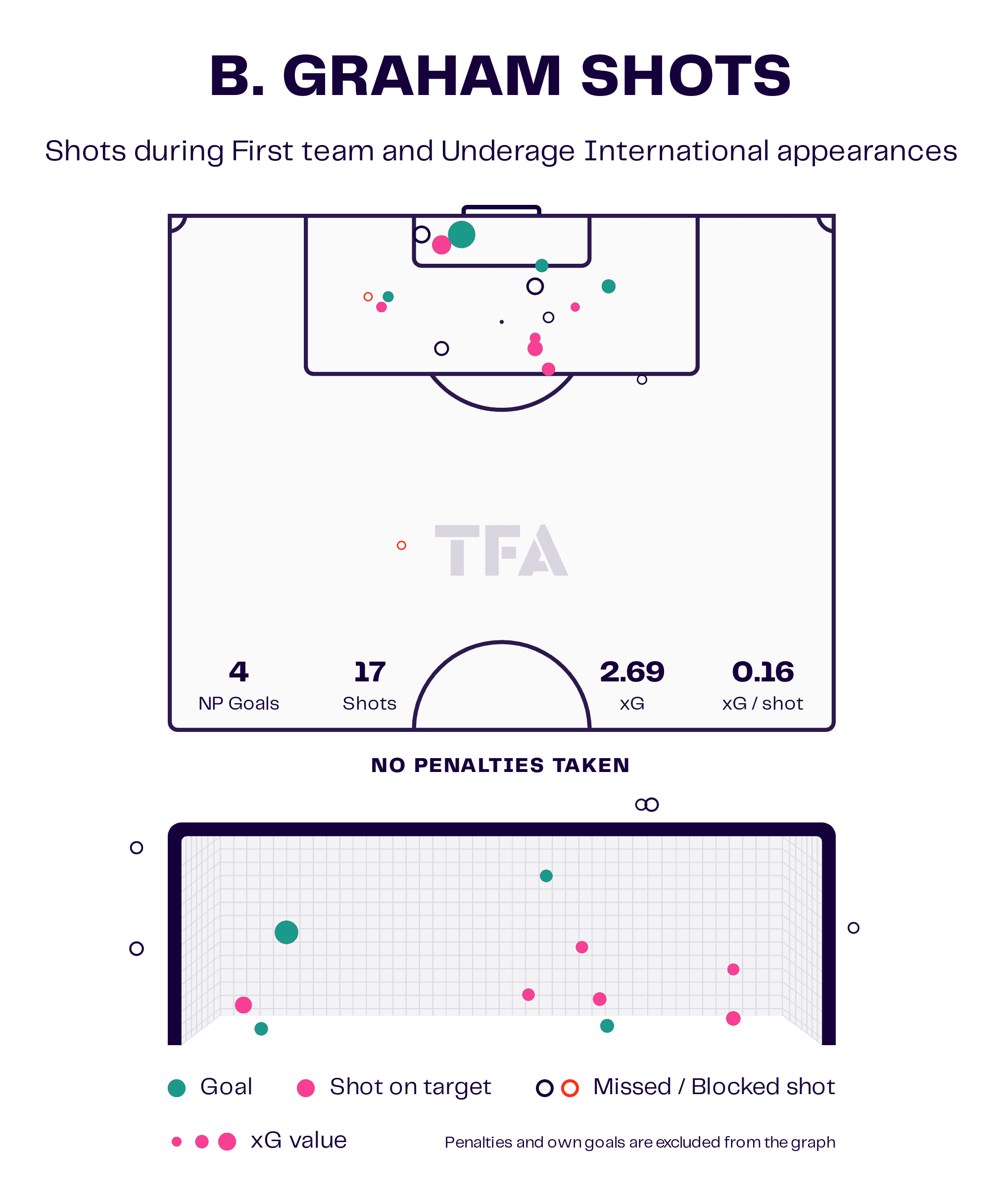
This is evident from the locations where Graham takes his shots.
Only two of the 17 shots he has had have come from outside the box.
This highlights once again his role in the team: getting into the most dangerous positions possible to score.
Braiden Graham Physical Development
Graham still needs several more years of physical development before he becomes the finished article.
His introduction to Linfield’s first team has helped prepare him for the competitive and physical nature of first-team football, which can’t be replicated playing in the academy.
Graham’s one physical weakness is his ability to challenge in the air.
Data from his first-team appearances and national team appearances at u17, u18, and u19 show that he is poor when contesting for the ball in the air. Graham has only won 21.9% of his headers.
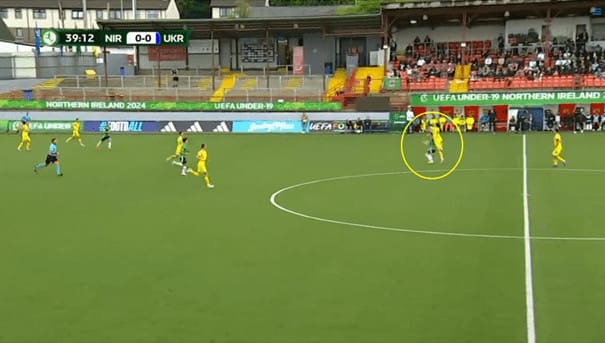
Here, we see Graham battling with the opposition’s centre-back for a ball in the air.
He is unable to get off the ground to compete for the ball.
The centre-back easily outjumps Graham, winning the ball through his superior physical prowess.
Graham’s greatest physical attribute is his speed.
He is rapid and displays amazing agility and balance.
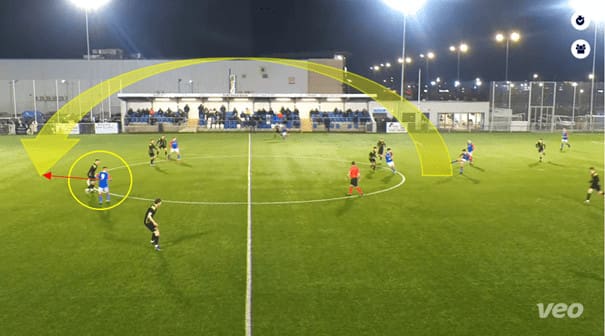
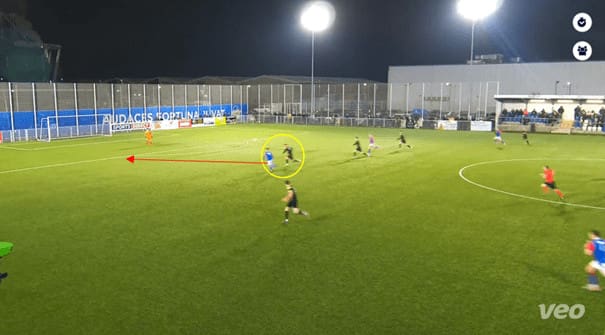
In this situation, a long ball is played over the top of the opposition’s defence.
Graham begins to race the opposition’s centre-back for the ball.
He outpaces the centre back and can stay upright when faced with physical contact, allowing him to get a shot off on goal.
Braiden Graham Attacking Style
When people think about Graham, their minds first go to his ability to score goals.
In the NIFL u20 development league this season, Graham finished as the top scorer, having found the net 33 times. Graham’s goals clearly highlight his goalscoring instincts.
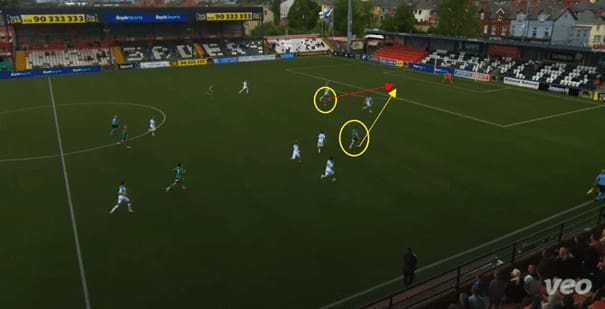
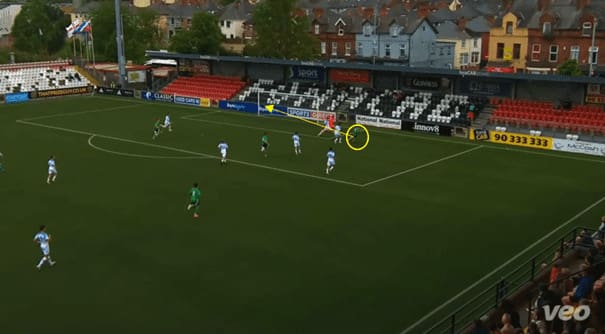
Many of Graham’s goals come from him making runs in behind, using his pace to break away from the opposition’s defenders.
Here, we can see Graham’s speed and his cleverness of movement.
Graham runs in between the opposition’s centre-backs and then makes a quick movement across the blindside of the centre-back who is closest to the ball.
Graham is then played in and has a lot to do from the position he finds himself in. Yet, he cooly places the ball past the goalkeeper to give his team the lead.
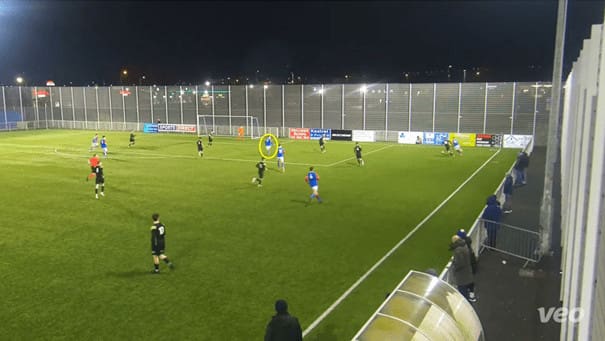
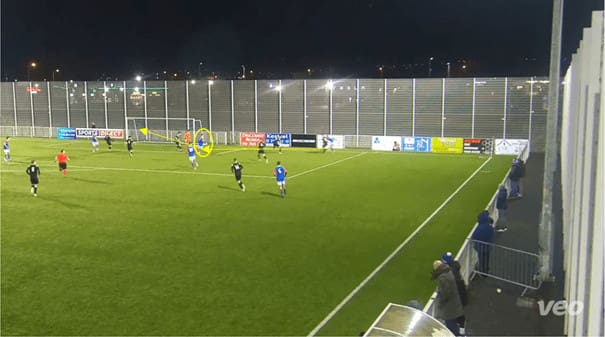
Graham’s desire to score goals can be seen by his willingness to get into promising positions. In this example, as the ball is worked out wide, he works hard to attack the front post. As the ball is fired in towards him, Graham skillfully lets the ball run through his legs so he can put the ball past the keeper with his heel.
Graham sometimes gets involved in the link-up play. Although his priority is to score goals, Graham would have to drop back at times in Linfield’s system to help progress the ball. Despite not being his strongest attribute, he does have an average of 3.16 passes per 90 seconds.
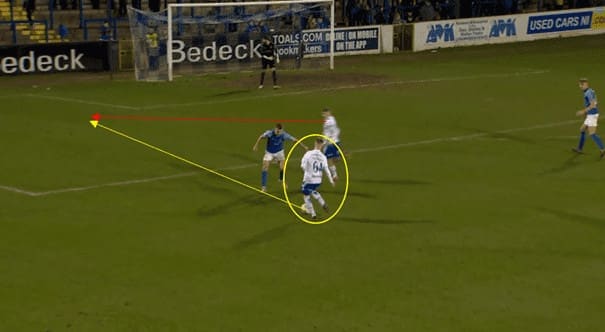
Here, we see a clear example of Graham linking up with his teammates.
He runs at pace, drawing in his opponent.
This creates the space behind the opposition’s defence, allowing Graham to slip in his teammate, who is advancing.
Braiden Graham Defending Style
Defensively, Graham shows a real maturity for a player so young. When he has been tasked with carrying out the team’s game plan, he can be relied upon.
Linfield last year played many of their matches with two strikers, who worked hard to force the opposition’s build-up into the centre of the pitch.
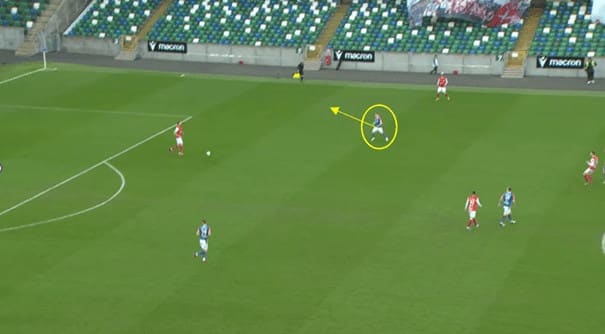
Here, we see that Graham can carry out this tactic of forcing the opposition’s centre back to pass through the middle of the pitch.
Graham is smart in his positioning, cutting off a pass into the opposition’s widest defender.
This allows Linfield’s midfielders, who are marking the opposition tightly, to win the ball back or force the opposition to play backwards.
Graham has a fantastic work rate, constantly showing tenacity and grit when fighting to win the ball back.
Statistically, Graham has impressed defensively, winning 59% of his defensive duels when playing for Linfield’s first team or Northern Ireland’s underage teams.
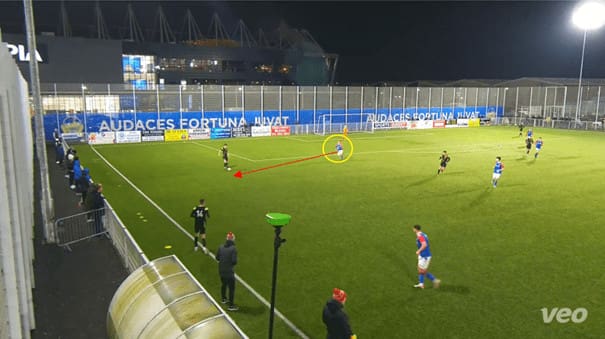
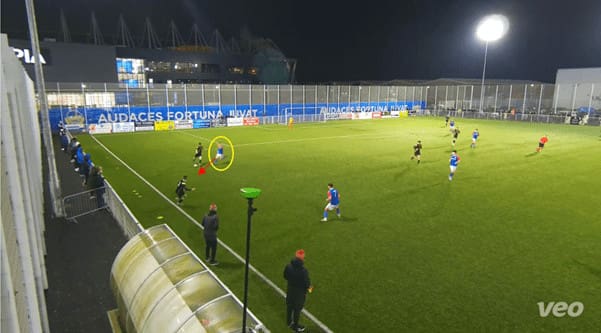
We see Graham using his pace to win the ball back in this situation.
He charges down the opposition’s centre-back, putting the defender under serious pressure.
Graham is then able to step in and block the defender’s forward pass.
Braiden Graham Transitions
Graham’s speed is used to great effect during both the defensive and offensive transitions.
During counterattacks, Graham demonstrates his speed and ability to position himself in goal-scoring or defending positions to great effect.
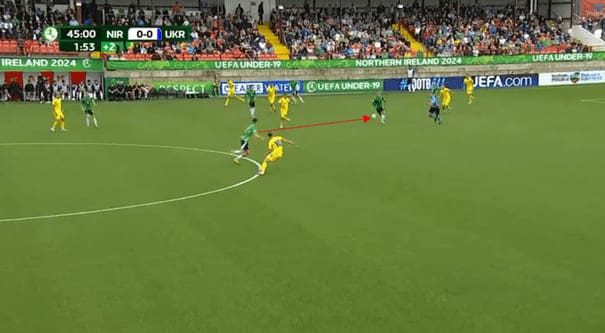
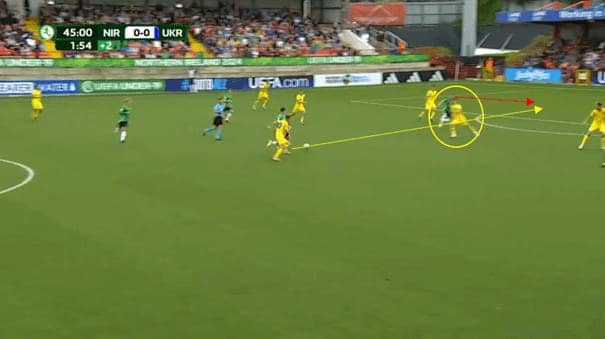
In this situation, a ball breaks loose and Northern Ireland are quick to pounce on the ball.
During this transitionary moment Graham has cleverly positioned himself in between the opposition’s defenders, checking his run to stay onside.
He is played through on goal yet is eventually denied by an excellent save by the goalkeeper.
Graham again demonstrates his exceptional speed and work ethic during the defensive transition.
Many may have felt that having a 16-year-old playing first-team football would have hindered Linfield while defending. This has been far from the case when Graham has played.
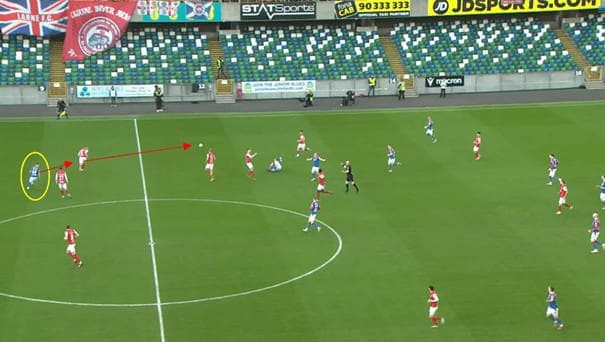
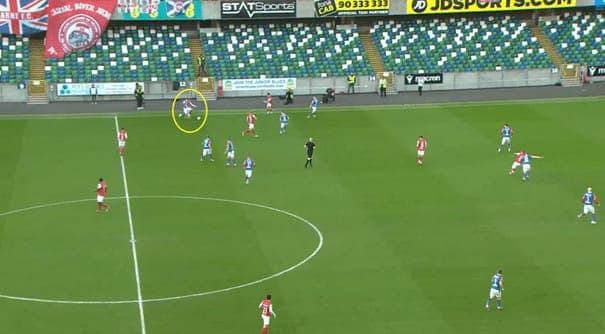
In this example, the ball breaks loose.
The opposition’s defender has a clear head start on Graham.
However, through his sheer speed and determination, he quickly gets close enough to challenge the defender and win the ball back for his team.
Conclusion
Graham has all the attributes to go on and have a successful career. He has predatory instincts, always ensuring he is in a position to score goals.
His blistering pace is used to great effect in both attack and defence.
The discipline he demonstrates defensively and the work rate he possesses has allowed him to be a real asset to his team out of possession.
Graham will look to cement himself in Everton’s u18 side this season, hoping to carry on the form that earned him the move.
If Graham breaks into Everton’s u21 side, it will be only a matter of time before he receives international call-ups to the u21 and senior sides.
Whether he can break into the Toffees’ first team is a different question entirely.
Loan moves in the EFL Championship may help prepare the young striker for life in the Premier League if he can reach his potential.

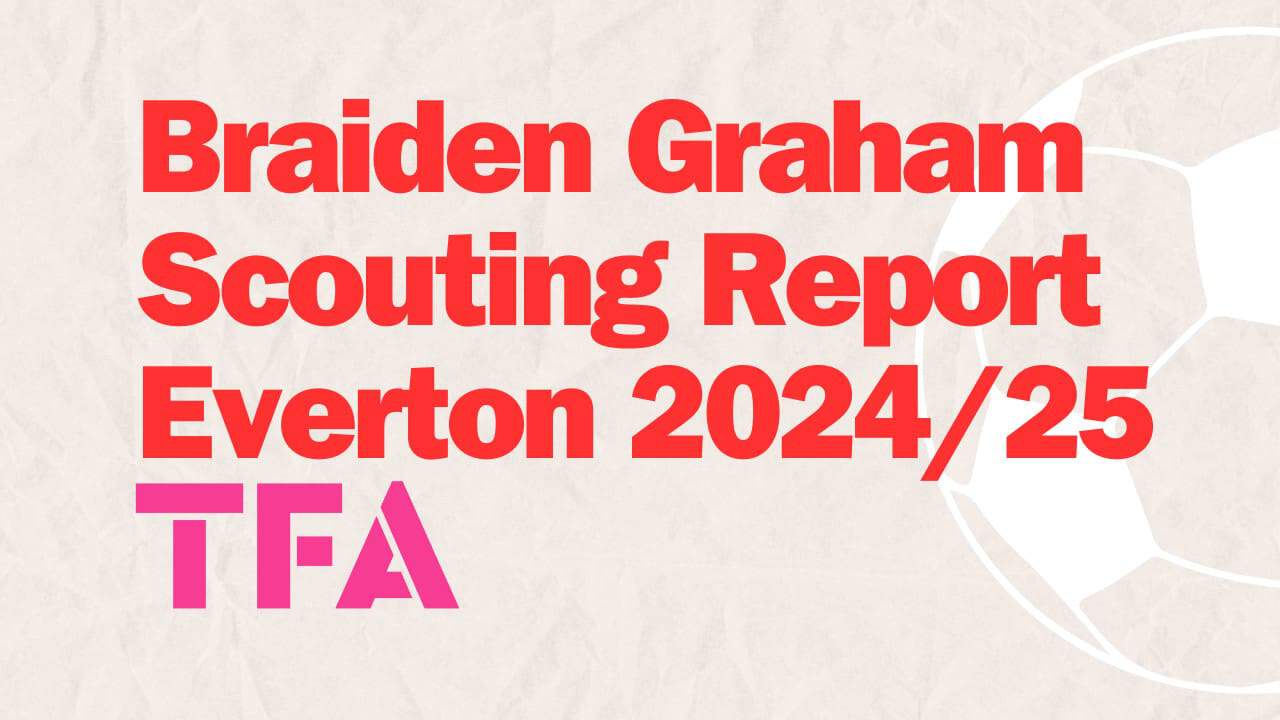



Comments